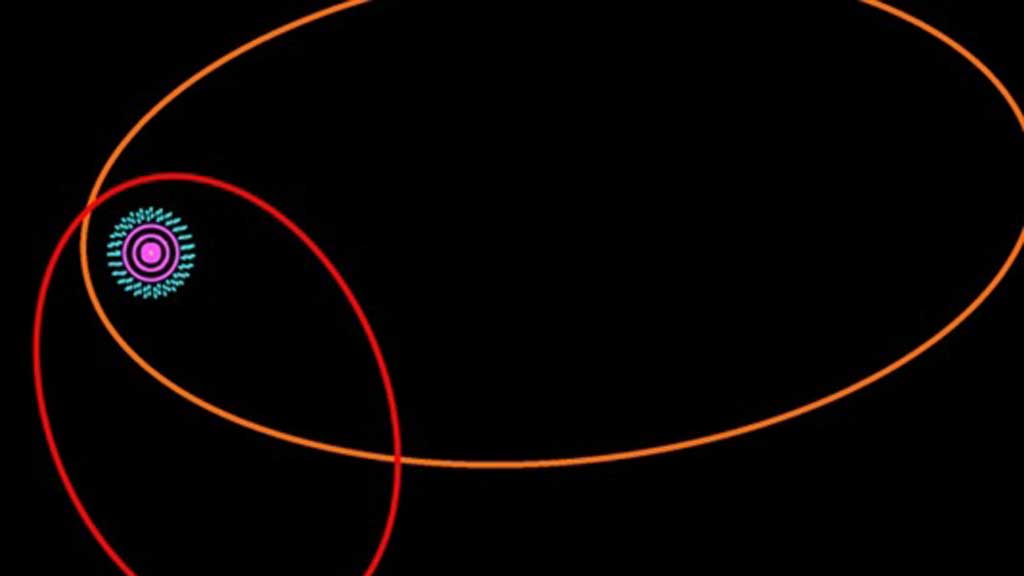New ‘dwarf planet’ discovered, hinting at a whole new world
Astronomers discover what they think is a new dwarf planet, far beyond the orbit of Pluto. And they can only guess how it got there.

Picture: Orbits of Sedna (orange) and of the new planet, 2012 VP 113 (red), compared with giant planets’ orbit of the sun (purple)
The new planet is thought to be very icy and around 280 miles wide. It has provisionally been given the catchy name “2012 VP 113” by the International Minor Planet Centre, which the discovery team shortened to VP, and then to Biden, after the US vice president.
It is less than half the size of a neighbouring dwarf planet named Sedna discovered a decade ago. And both planets are the first objects to be found in the inner Oort Cloud: a region of the solar system previously believed to be devoid of any planetary bodies.
If the new planet’s size is confirmed, it will be classified as a dwarf planet – the same category as Pluto – and will open the possibility that there are hundreds more objects out there waiting to be discovered.
The new objected was spotted by Scott Sheppard of the Carnegie Institution of Washington DC and Chad Trujillo of the Gemini Observatory in Hawaii, who published their findings in the journal Nature.
They said that nothing in the appearance of the modern-day solar system can account for Sedna and VP 113’s existence.
“When Sedna was discovered 10 years ago it kind of redefined what we thought about the solar system,” said Mr Sheppard. Their report concluded that the closest the new “VP” object gets to the sun is around 12bn kms: this is about 80 times as far as the Earth’s orbit of the Sun.
‘Some of these inner Oort cloud objects could rival the size of Mars or even Earth’
From the amount of sky searched, both Mr Sheppard and Mr Trujillo estimate that about 900 objects with orbits like Sedna and 2012 VP113 and sizes larger than 1000km may exist and that the total population of the inner Oort cloud could be bigger than that of the Kuiper Belt and main asteroid belt.
“Some of these inner Oort cloud objects could rival the size of Mars or even Earth. This is because many of the inner Oort cloud objects are so distant that even very large ones would be too faint to detect with current technology”, says Sheppard.
The astronomers both hope that the search for objects beyond Senda and “VP” continues, “as they could tell us a lot about how our solar system formed and evolved,” added Mr Sheppard.
-
Latest news
-
As India goes to the polls in the world’s largest election – what do British-Indians think?6m

-
Tees Valley: Meet the candidates in one of the biggest contests coming up in May’s local elections4m

-
Keir Starmer says public sector reform will be a struggle7m

-
Nicola Sturgeon’s husband Peter Murrell charged with embezzlement of funds from SNP1m

-
Ukraine might finally get $60billion in American weapons and assistance to defend against Russia3m

-




